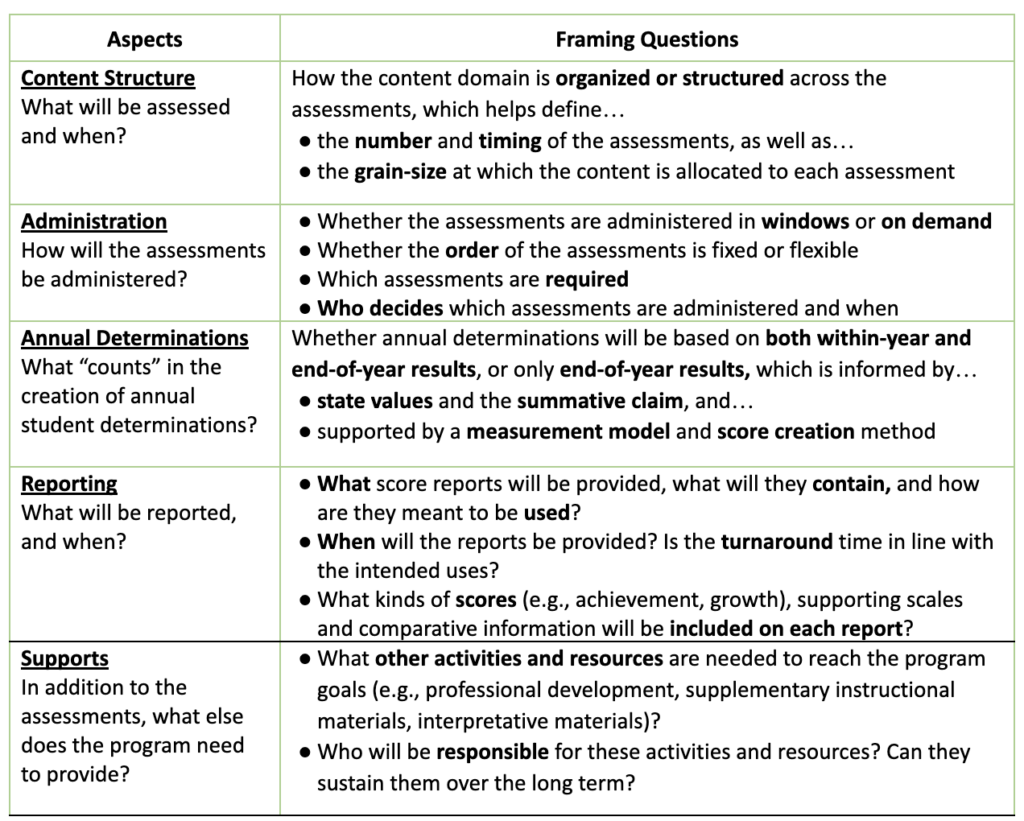
Slow the Flow of Your RFPs
Changing Procurement Timelines Can Help Assessment Innovation
Doing anything new takes time: more time than doing it the old way, and often, far more time than expected. Changing standard operating practice can be startlingly difficult, and through-year assessment programs, which are sparking a lot of interest in states right now, represent a significant departure from standard operating practice.
Developing new assessment programs can be hobbled by a key tension: The need to get the work done right now is at odds with the time actually needed to develop them. This tension exists even at the very beginning of many assessment programs, in the Requests for Proposals (RFP) process. But if we want better assessment programs, we need to change our processes—the RFP process included.
Making Space and Time to Adequately Frame the Requested Program
Writing an RFP is often a herculean task: state department of education staff lay out all the details of a multiyear assessment program (see this toolkit for general RFPs), including item development, form assembly, administration platform, and test security. The RFP also offers a unique chance for a department of education to outline its vision, and ideally the logic behind the assessment program through a theory of action.
Creating an RFP is like planning a trip: to get to your chosen destination, it’s important to know where you are going and what you want to do when you get there. However, there might be multiple routes to your destination. Similarly, RFPs work best when the outcomes and constraints are very clear, whereas the methods to achieve those outcomes are not overly specified.
A thoughtful approach is particularly important for through-year assessment because there are more destinations than ever. Through-year models differ significantly from one another, so it’s important to think through which one will get you where you want to go.
Doing so will consequently require states to wrestle with many questions they don’t typically encounter, such as those posed in the table below. The questions below are important, but are not the only ones; nor will a state be able to answer all of them. Some will need to be addressed in the first years of implementation.

Assessment vendors, too, need time. They must generate a response that not only meets the RFP requirements, but is also realistic and actionable. With insufficient time between the posting of an RFP and the response deadline, vendors have too little time to thread the needle between innovation and practicality. The narrower the window, the narrower the range of innovation any vendor is able to offer. With very tight timelines, proposals will contain only what vendors have currently developed.
A Suggested Timeline for Through-Year Assessment Procurement
This process can’t happen in a few weeks. The reality is that the RFP process requires multiple months.
Ideally, six months or more.
This timeframe may be much longer than the ones departments normally operate under. But care taken on the front end will pay off on the back end. With all this in mind, I present a rough timeline, below, as a guide. Hopefully, it can help those developing an RFP—or facing the future development of an RFP—organize and prioritize their activities, and consider what they are willing to omit or compress, and what is non-negotiable.
Visioning: Two Months
- Identify and prioritize the problems the program is meant to address.
- Gather requirements and constraints from key stakeholders.
- Pool feedback and generate core set of principles for the state’s assessment vision.
- Outline a full set of activities involved in the through-year assessment program.
RFP Development: Two Months
Based on the vision and defined activities, develop a draft RFP, which, among other things, should:
- Outline the non-negotiable aspects of the through-year program and the aspects that are open to vendor direction.
- Clearly define the constraints and conditions.
- Explicitly explain, in painful detail, expectations and deliverables.
- Provide clarity on the roles of the department, vendor, and other third-party stakeholders.
- Determine a vendor’s ability and capacity to provide a customized solution.
- Outline all the key requirements of the program, whether they’re specific to the through-year model or not.
RFP Response Period: Two Months or More
Once the RFP is developed and released, states must build in enough time—and appropriately generous deadlines—to ensure that potential bidders can respond adequately and, where needed, develop novel ideas, approaches, and methods. Even more time, beyond these two months, is needed for proposal evaluation and the subsequent contract award.
Key activities after developing the RFP typically include:
- Publicly posting the RFP
- Receiving questions from bidders
- Answering bidders’ questions
- Holding a bidders conference or webinar
- Receiving proposals
Closing Thoughts
You’ve probably heard the truism: “Change the process, change the results.” Here, I suggest that changing state assessment starts at the very beginning of the process, by changing the RFP process.
In particular, make time and space to answer foundational questions and develop the basis for a strong program. Make sure you know where you want to go and how you want to get there. In some cases, this might mean moving more slowly than you originally intended.
Instead of moving to a through-year program because the current state assessment contract is up, for instance, it might be better to extend the current contract by a year to make space for a more deliberative process. The additional time will also allow you more chances to learn from the field, since more than a dozen states now have through-year programs in varying stages of development (Dadey et al., 2021, EducationFirst, 2022).
Whatever the destination, it’s critical that states make space and time to carefully think through the kinds of issues I’ve outline here. Too often, unfortunately, the time given to the RFP process is compressed. Rushing to get the RFP out could jeopardize some of a new program’s potential benefits, including the opportunity to address the very issues the state is trying to address by pursuing a through-year program.
